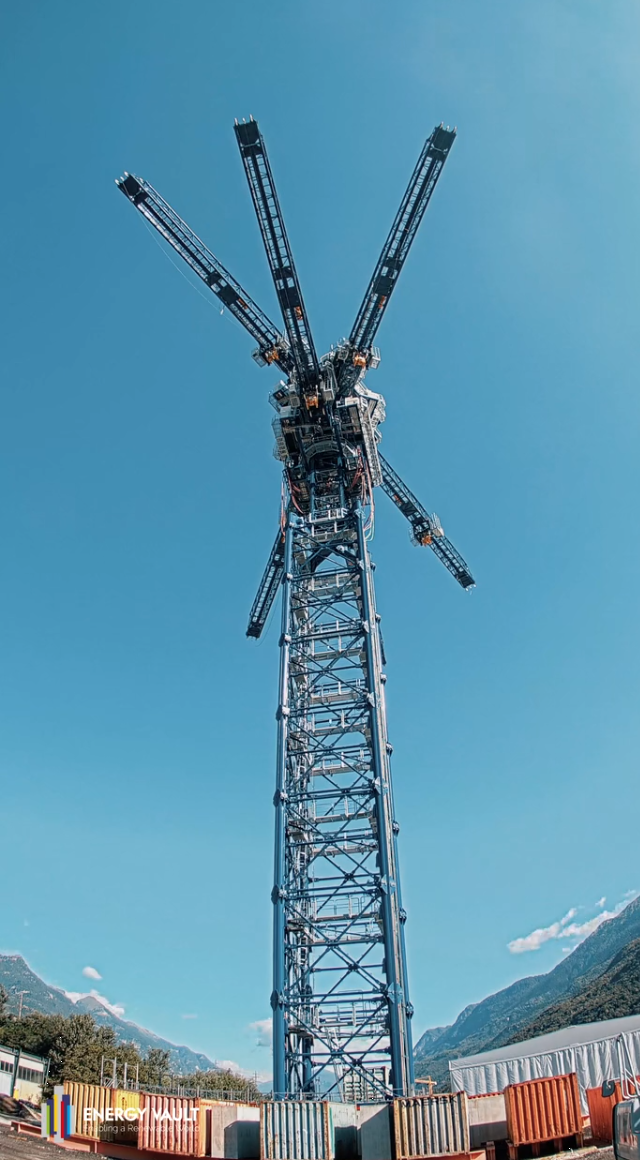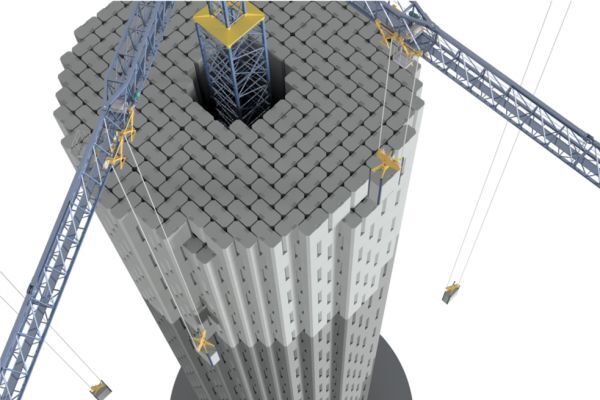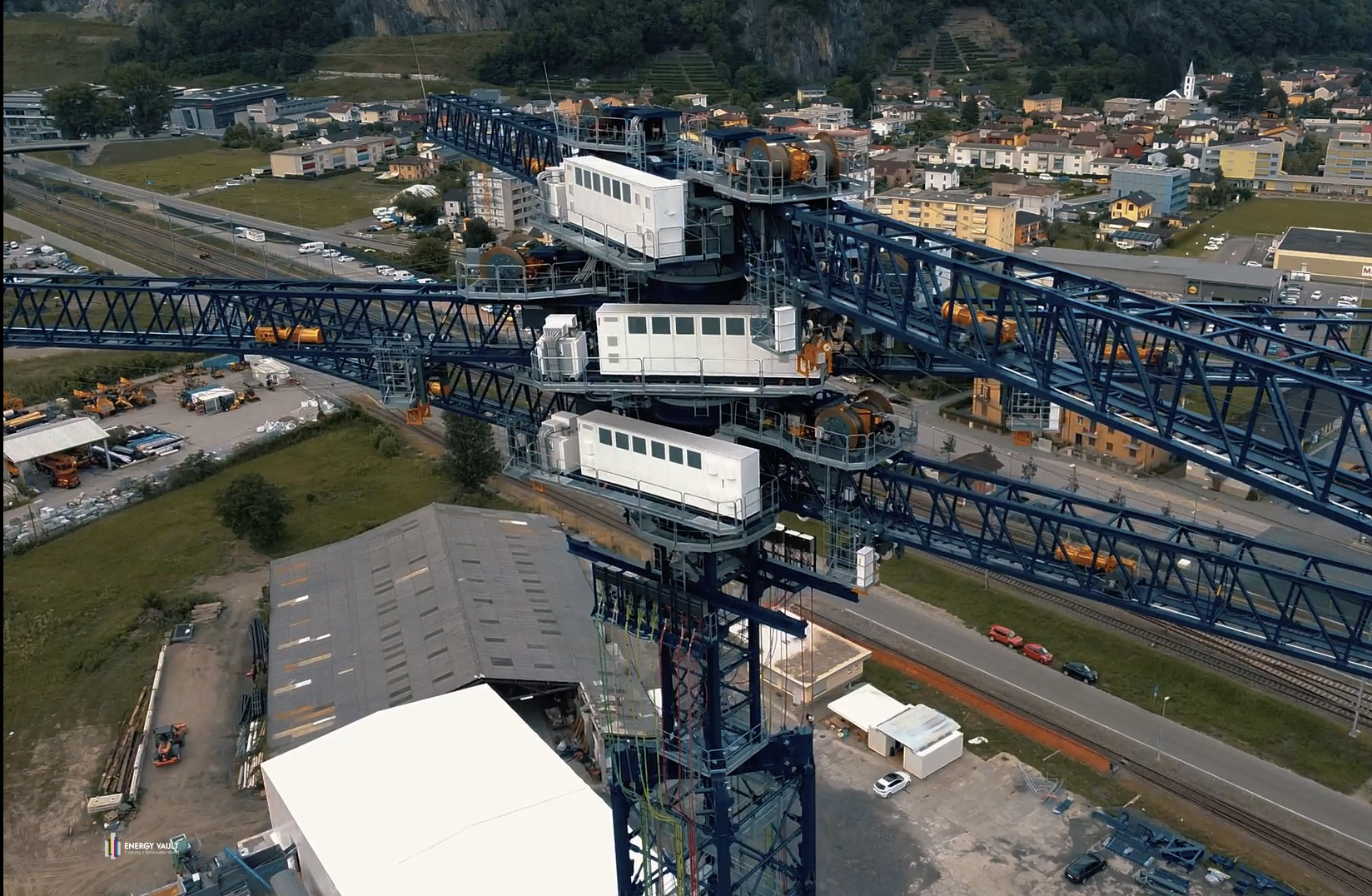The majority of new electricity generation in North America and Europe is renewable wind and solar, hooray! But they’re variable. The wind and sun may generate more energy than is needed at times, and fall short at others. If enough of the electricity consumption isn’t variable demands that customers can shift out of periods of low renewables output (demands such as recharging EVs or pre-heating buildings), then utilities might have to fire up the evil fossil fuel plants. One way to smooth this out is to add energy storage to the grid. Tesla has made waves installing big battery packs worldwide to smooth out oversupply and shortfalls in generation. This works to store a few hours of power, which is great to increase the time that wind and solar can provide power, but not enough to make up for a shortfall extending through one or more cloudy windless winter days, or trying to power through an entire winter. So it would be great to develop some energy storage that’s cheaper than batteries.
We’ve had energy storage for years, in the form of pumped hydro. When electricity is plentiful, pump water uphill into the high reservoir, then when you need it, let the water flow back downhill through a turbine. This works well because a high-up lake holds a massive amount of water (= energy) that you didn’t pay for; and you can make the pipes quite fat (= power).
But two nearby lakes or reservoirs separated by a big vertical drop are pretty rare geography. So we need other kinds of energy storage.
Other energy storage ideas
The mainstream press is full of gee-whiz articles about energy storage. There are many ways to store energy, using:
- gravity (Energy Vault’s ridiculous tower blocks, Gravitricity’s abandoned mineshafts, ARES’ train a-rollin’ down the tracks 🎶)
- heat (Siemens Gamesa’s hot stone, Alphabet/Google X Malta’s molten salt)
- flywheels (MAGFLY)
- compressed air (two underground caverns set up a decade ago, a few planned that went nowhere)
- liquid air (Highview Power’s CRYOBattery)
- hydrogen (every natural gas company greenwashing to appear relevant)
And then there are all the better batteries such as flow batteries, which were apparently untarnished by the obvious scam nanoFlowcell run by serial fraudster and, I am not making this up, light pop singer Nunzio LaVecchia. Because if you’ve invented a revolutionary battery, you want to screw around making one-off concept electric vehicles and pretending they will go into production.
The latest uncritical coverage of alternative energy storage is “How to store power in soil and salt” on the BBC’s “People Fixing the World” podcast, which covers Energy Vault, Siemens Gamesa hot stone, Malta, and MAGFLY.
But when you look at actual storage bought by private companies with their own money, it seems to be lithium-ion batteries all the way. For example, the article “How US Grid Operators Plan To Tackle Energy Storage at Gigawatt Scale” doesn’t mention anything other than lithium-ion batteries.
Besides, since there will be massively more renewable energy built to electrify land transportation, heating, industrial processes, and Power2X and all of these are potential variable demands, I wonder how much longer-term storage we will actually need.
Anyway, let’s focus on man-made gravity storage.
Gravity storage!
Start-ups think “Let’s lift something else heavy into the air!”… not thinking too hard. They make great pitches and videos, but it’s close to nonsense.
Why this is dumb part one: common sense
Common sense can be wrong, but you may have noticed:
- Riding elevators and escalators is free, even in really tall buildings, no matter how much you weigh.
- Skyscraper management companies don’t roll tons of filing cabinets into their elevators at night and weekends to make some money raising and lowering elevators.
- You don’t see farmers leaving their heavy farm equipment suspended high in the air before a potential power cut so they can generate some electricity.
Why this is dumb part two: let’s do some math
The potential or gravitational energy in an object of mass m at a height h above the ground is simply m × g × h, where g is the acceleration due to gravity, which is about 9.8 m/s2 at the surface of the Earth
I find a units calculator invaluable to do the energy conversions and keep track of the units for things like this. There’s an online version of the GNU units conversion program and scientific calculator at https://www.fourmilab.ch/webtools/units/ which knows how to convert between units and knows several values including the Earth’s acceleration due to gravity. You can paste all the calculations below into its Convert line, enter desired units in its To field, then click [Convert].
How much energy does it take to raise 1 tonne 100 meters into the air (the height of a 23 story building)
Convert: 1 tonne * gravity * 100 meters
⟶ Definition: 980665 kg m^2 / s^2Almost a million chunks of whatever “kilogram meters squared per seconds squared” sounds like a lot of energy, maybe we should find a nearby office building and Make Money Fast Tonite! When dealing with electricity we usually deal in kilowatt·hours; you probably pay around $0.10 – $0.20 for each one from the utility whether you use it to run a microwave for an hour or keep an LED lightbulb lit all week. If you put kWh into the To line of the units calculator, you get
1 tonne * gravity * 100 meters = 0.27240694 kWhSon of a bitch, 1/4 of a kWh doesn’t look like the path to riches! That’s how much energy it’ll take to raise the tonne in the elevator, assuming no losses. Lowering the elevator and spinning a generator is inevitably going to get you less energy than this (no perpetual motion machines in this universe), so even if you pay cheap night-time rates to raise a load of crap then lower the elevator when electricity is expensive, you’re going to make at best less than a nickel.
Let’s flip things around a little. Our energy company is competing with batteries. How much can a single rechargeable NiMH AA battery raise? The Eneloop AA is about 1,940 m⋅Ah or milliAmpere hours, which means it could deliver 2 amps for an hour. That’s not energy, because how much damage it can do depends on the voltage. The Eneloop’s nominal voltage is about 1.2 Volts. So how high can a single AA battery lift a TON?
Convert: 1940 milliampere hours * 1.2 V / ( 1 tonne * gravity )
To: meters
⟶ 0.85460376 metersAnd now you can see why backyard tinkerers don’t hoist their cars int the air in case there’s a power outage: that will barely deliver the energy of a 4-pack of AA batteries. Tesla Powerwall has nothing to fear.
Why this is hard: “Let’s make it up in volume”
Energy = m × g × h is a simple formula. All that these gravity energy storage companies can do is fiddle with mass and height. But it’s really hard to increase either to meaningful amounts of storage. To store and recover the same amount of energy as in a midrange Tesla Model 3’s battery pack (60 kWh), you’ll need about 300 elevators each lifting a tonne 100 meters. Obviously instead you’ll use a few elevators lifting much more weight much further. But it becomes vastly harder to lift 1000 tons a kilometer into the air.
Energy Vault’s idea is to raise and lower 35-ton blocks into the air, constructing and deconstructing a vast Jenga tower. It has an amazing computer animation of how great this is.
Here is its demonstration system (I think this is a real photo, not a computer render) in Ticino, Italy:

It’s 110 meters tall, so basically the height from my calculation above, but much heavier blocks that are raised and lowered in pairs, one at each end of one of the three gantries to reduce stress on the cranes. So maximum energy per pair of blocks is
2 * 35 tonnes * gravity * 100 meters = 19.068486 kWhSo it stores 1/3 of the energy that a Tesla Model 3 battery can, for about 140 times the weight. The demonstration crane is not actually raising and lowering anything yet. Here’s the fantasy, showing half of two of the cranes dismantling the top of the Jenga tower:

But there are huge problems with this.
The average height each block is raised. The only blocks that benefit from the full height drop are the highest-most ones which are the first ones you lower and the last ones you raise. As you dismantle more of the tower, each block generates less and less energy, to the point that it’s not worth lowering the lowest row of blocks. You can only lower every block to the ground if the cranes spread the blocks further away, but now this takes up a lot more space, the crane arms must be much more robust, etc.
The money cost and environmental cost of the materials. Energy Vault claims it’s going to use a cheap cement mix. But the blocks have to fit together well for years.
The money cost of the cranes. Look at how elaborate the demonstration unit is:

That looks hella expensive. Disqus user “dcarde” commented on an uncritical article in IEEE Spectrum (an engineering site!) that the winch to lower two 35 ton weights
is a 4,000 horsepower winch. It is a massive beast 30 feet long, 15 feet wide, weighing 160,000 lbs. It has two big gearboxes with two 1,000 horsepower motor/generators on each (4 motors total for each winch), lube cooling system, a massive emergency friction brake operated by a hydraulic system able to stop a runaway 80,000 load hurtling toward the ground. It has tons of sensors, encoders, and costs about 4 million USD. Yes, you need six of these. And no, they must sit on the ground and feed wire rope up the tower to the jib sheaves 160 meters up. Each winch will also have a 36 foot long house (container) for four VFD drives, regenerative braking system for emergency operation, air conditioning for cooling.
That is before discussing the complication of the Tower jibs. You have three massive slew axes with closed loop positioning to rotate the jib cranes independently, and six horizontal traveling assemblies to radially locate the top block. …
The rapid accurate positioning required. To generate substantial power, the winches can’t lower each pair of blocks in 5 seconds and then slow down and spend a minute gingerly maneuver each block into position while two people in hardhats talk to the crane operator over walkie-talkies. It has to be fast and completely automated. It has to work in the wind.
The wear and tear on the cables. 1-ton elevator cables have a long service life. 35 ton blocks being rapidly lifted and lowered put a lot more stress on cables.
Other gravity storage concepts
Gravitricity’s idea is to raise and lower tons of material in existing abandoned mine shafts. ARES’ idea is to drive a train pulling heavy train cars up and down existing steep train tracks. But both have the same problem as Energy Vault – where do you put the weights at the top and bottom? The mine shaft or train track might be several times as deep/high as the Energy Vault Jenga tower, but to store a lot of energy you need to store many units at the top and the bottom of the drop. For the mine, you need an automated container yard like the ones at a port to move multiple weights on and off the cable at the surface and another one deep underground in the mine; for the train, you need an automated switching yard full of rail cars at the top and bottom of the mountain. Gravitricity has the problem that existing mineshafts are narrow. So to increase the mass they have to lower a long narrow heavy weight. That might make the underground container yard impossible, but a single weight permanently in the shaft would put even more stress on the cables, and could be so long that it reduces the height drop.
Gamify it!
Apropos of this, I offer my surefire hit computer game idea for free: Energy Vault Tycoon Simulator!
You try to make money with these contraptions, struggling to code AI to raise and lower blocks fast enough and accurately enough to store/generate electricity at high power, trying to build blocks cheap that won’t wear out, firing and rehiring the cadre of construction workers needed to keep each crane working, shutting down in high winds, realizing that raising then lowering a heavy object actually takes and recoups a tiny amount of electricity, and that many of the blocks you raise and lower generate even less electricity. The game ends in an emotional meeting with Masayashi Son where he says his so-called Vision Fund is pulling the plug on further investment, joining his other venture capital flameouts.
Tagline “Have fun and learn as you fight physics… and eventually lose!”
